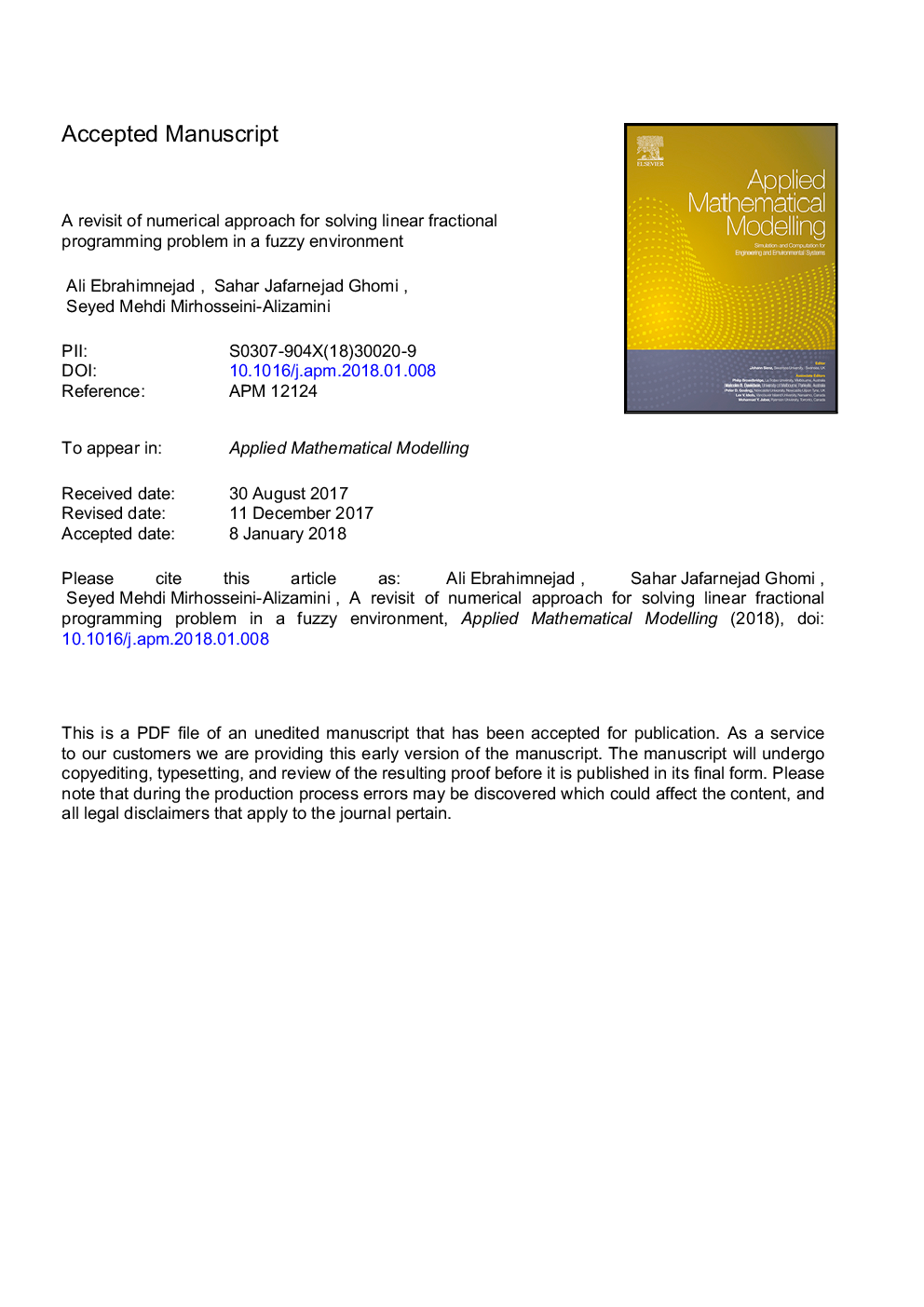| Article ID | Journal | Published Year | Pages | File Type |
|---|---|---|---|---|
| 8051941 | Applied Mathematical Modelling | 2018 | 25 Pages |
Abstract
In the article, Veeramani and Sumathi [10] presented an interesting algorithm to solve a fully fuzzy linear fractional programming (FFLFP) problem with all parameters as well as decision variables as triangular fuzzy numbers. They transformed the FFLFP problem under consideration into a bi-objective linear programming (LP) problem, which is then converted into two crisp LP problems. In this paper, we show that they have used an inappropriate property for obtaining non-negative fuzzy optimal solution of the same problem which may lead to the erroneous results. Using a numerical example, we show that the optimal fuzzy solution derived from the existing model may not be non-negative. To overcome this shortcoming, a new constraint is added to the existing fuzzy model that ensures the fuzzy optimal solution of the same problem is a non-negative fuzzy number. Finally, the modified solution approach is extended for solving FFLFP problems with trapezoidal fuzzy parameters and illustrated with the help of a numerical example.
Keywords
Related Topics
Physical Sciences and Engineering
Engineering
Computational Mechanics
Authors
Ali Ebrahimnejad, Sahar Jafarnejad Ghomi, Seyed Mehdi Mirhosseini-Alizamini,
